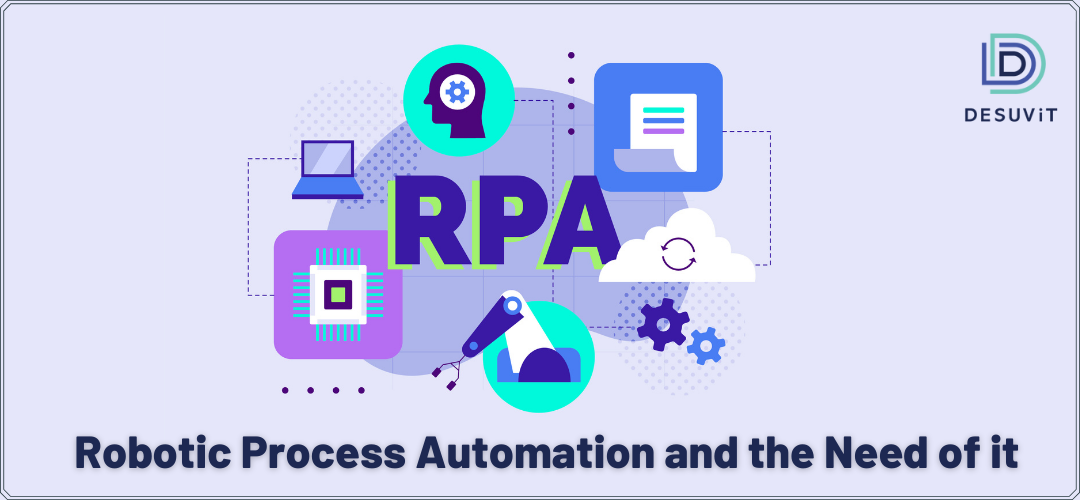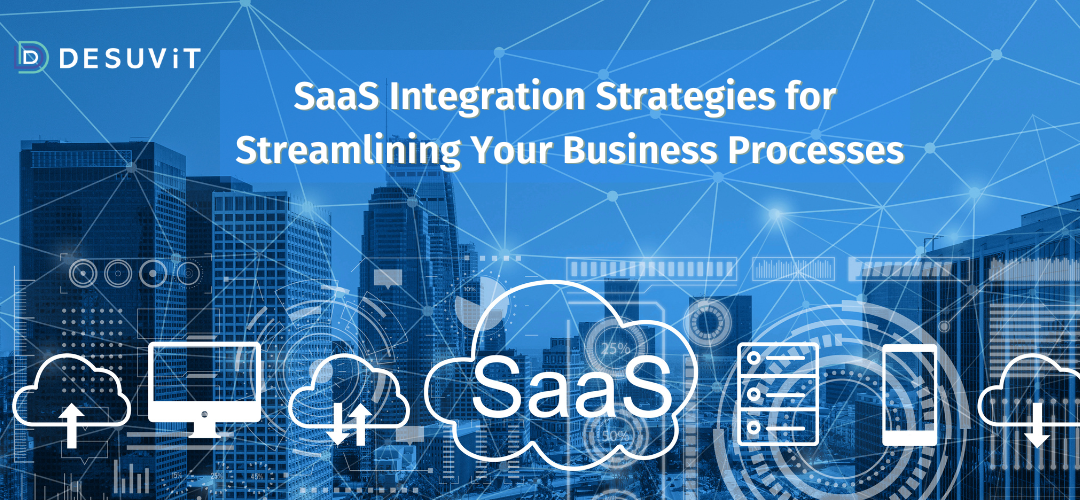While we have only started using RPA (as a term) in the 2000s, the technology itself surfaced around the 1990s. For more than three decades now, we have only experienced an increase in the usage pattern of this technology.
Whether you are in retail, manufacturing, healthcare, or any other industry, robotic process automation helps you achieve significant improvement in productivity. A logistics company can automate its order workflows, an IT services company can automatically cater to customer complaints, and a payroll company can easily track attendance and prepare payroll -all with RPA.
According to a study by Gartner, the revenue of RPA was expected to reach around USD 2 billion in the year 2021, which was a 20% increment from the year before that (2020). In the same study, we can also find that the growth in 2019 was around 62% and in 2021 was 19.5%. The time between 2019-2022 has been marked for the growth of digital transformations, and it is not a surprise that this period brought growth in adoption for RPA.
What Is RPA?
Robotic process automation involves using automation technology for the repetitive process of the workplace. The reason why we are using the word robotic is that it is a type of virtual workforce that completes tasks for us.
For example, when your RPA technology is tracking the attendance of employees to prepare payroll, we are using a type of virtual workforce to achieve operations that might be too repetitive and time-consuming for our business.
A typical HR team employee would need more time than a machine to track attendance and prepare payroll. Using RPA for these processes helps reduce the burden of your employees and allows them to strategically invest in the organization. They don’t need to extract data, enter data, apply business rules, and achieve the outcome. Your employees can bring value to the business with strategic thinking and revolutionary processes.
However, it is necessary to remember that robotic process automation is powered by a robust IT infrastructure. You need to have revolutionizing technology and IT architecture to sustain high-level RPA processes.
Technical Aspects Of RPA
In technical aspects, robotic process automation is similar to the human workforce. It contains robots, a manager, and a trainer.
Robots are expected to complete tasks or business processes in a structured manner. Here, we can select between unattended and attended robots. Attended robots work like your virtual assistants and assist their human counterparts. The human employee working with the robot can trigger its action and achieve some level of interaction.
Unattended robots are not virtual assistants but virtual workers. They have pre-scheduled triggers that work as per the requirements of the business. This type of robot is more mechanical and less interactive.
The robot manager works similarly to a human manager; it helps manage your robot. For example, assigning tasks, logging actions, monitoring actions, exception handling, job scheduling, etc. Depending on the selection of your robot, you can select from different robot managers like control room, orchestrator, or control tower.
Lastly, we need a robot trainer to train our robot for business processes. This robot doesn’t understand how your business works. Therefore, for this, we need a trainer, in which your human executive can write scripts for process automation. We now have simple trainers that don’t require coding, so any employee related to the process can create a script to automate a process.
Robotic Process Automation has various technologies involved in the process. Here’s an overview:
Machine Learning and Artificial Intelligence
Since RPA doesn’t have the ability to learn and perform tasks without human supervision, technologies like AI and ML are used. Without AI and ML, RPA works in a pre-defined manner, where we write the code limited to the written capability. This means dedicated answers offered by a chatbot for very specific questions.
With ML and AI, RPA can gain the cognitive ability, which means the bot can answer questions based on learned knowledge. Data collected over time doesn’t go to waste.
Data Extraction
RPA needs to integrate data extraction to utilize semi and unstructured data. We can’t manually pull out data from different sources and structure this data. This will lead to errors and high costs. Data extraction technologies help businesses to save costs and add value to processes.
Process Mining
Process mining technology allows businesses to know bottlenecks in the process structure. It helps:
- Prioritize automation for the best processes
- Allow RPA implementation in a fast manner using business logic
- Ensure monitoring of RPA bots
With the help of process mining, we can mine data deeply to gain better insights into current business processes, which means better RPA deployment.
Benefits Of RPA
What are some of the benefits of using RPA in your business?
- An obvious benefit of RPA is reducing how we use the workforce. If you need one person to complete payroll and they need at least a week for the task, an RPA robot can complete it in hours.
- The speed of executing repetitive work increases drastically. Since robots are able to process and calculate without challenges, the speed of execution is quick.
- As humans, we tend to make errors due to various factors. Sometimes, we miscalculate. In RPA, there are fewer human error risks because machines work on rules, and they are unlikely to make mistakes.
- Since robots achieve repetitive tasks, your employees can work on strategic roles, improving business productivity.
- You are able to reduce the cost of managing processes. While the IT infrastructure for RPA may cost you money, it reduces expenses on compliance, errors, and resources. You need fewer resources, and errors are also less, which optimizes the budget.
Use Cases Of RPA
We can use RPA in many industries, such as healthcare, logistics, manufacturing, retail, etc. Ideally, RPA finds a useful application in almost every industry. Below we have discussed a few use cases in these industries.
Customer Service
We have human employees who attend calls and respond to chats to serve customers. However, there’s a limit to when and how humans respond. Firstly, we can have a limited number of human employees. With a massive influx of requests and customer queries, you may find it hard to connect with every user. Secondly, the human workforce can only work an eight-hour job, which means you can’t answer queries at odd times.
Using the RPA bot, we can gather information in real-time and train the bot to answer basic queries. These are pre-determined processes or actions, such as changing passwords, telling order status, etc. This allows your business to stay active all the time.
Better Productivity
According to this survey by Deloitte, 86% of businesses that adopt RPA receive an improvement in productivity.
There are many monotonous tasks in the workplace. For example, entering attendance data in a sheet or responding to queries like where is my order? When you use RPA, you are able to free your employees from these tasks, which helps improve the productivity of the business.
Information Processing
RPA is a beneficial resource for your business because it has the power to traverse vast amounts of data without getting tired. So, if you have a file with 50 thousand contacts and you need to find one person in the file based on certain factors, RPA would help you with this without getting tired.
With the help of RPA, you can improve how you store and process data. Your data retrieval, entry, storage, and process will become clean and hassle-free.
Payroll Automation
Payroll processes involve many activities, such as attendance tracking, tax calculations, salary calculations, and several other things.
With the help of RPA, you can automate many activities in the payroll department. For example, you can automate attendance tracking and calculation, which will help you overview and dispatch salaries without manually processing details.
Use Cases of RPA in Industries
Customer Service
The most obvious use of RPA can be observed in the customer service industry. this involves automating contact center processes. From verifying e-signs to automatically approving or rejecting returns or other requests, RPA improves the speed of resolution in customer service.
It even helps stay connected with the customer 24*7.
Financial Services
The financial services industry includes closing and opening an account, exchanging payments, audit request management, and insurance claim processing. We can easily automate these activities using RPA, which will allow seamless movement of data from one stage to another with necessary instant approvals where human supervision is not required.
Human Resources
Many HR-related tasks can be easily automated, such as calculations, tax submissions, and payslip generation. RPA is the tool that can automate employee information updates, salary slip generation, attendance tracking, and employee service.
Accounting
Many manual activities plague working in the accounting industry, such as operational accounting, budgeting, report generation, etc. With the amount of available data, RPA-backed tools can easily ensure the automation of general accounting, budgeting, and reporting.
Conclusion
Robotic process automation is used to automate several mundane and repetitive tasks. We also have AI-powered bots that help you automate activities and make the machine learn over time. This means that we have the power to improve our functioning drastically with RPA, depending on the type of bot you utilize. You only need to find your business’s key work areas and requirements to get started.
Desuvit Technologies can help you implement RPA for improved productivity in your business. We have helped a range of companies in different industries to reduce workload, improve the speed of execution, and optimize costs.
If you wish to know more, Connect with us today.
Get a Free Technical Consultation with our experts!
Desuvit is a Norway-born software development company delivering Custom Software Development, Mobile Apps, and Web Applications Development for various verticals and business domains. We offer end-to-end solutions for companies with no software or IT division, Startups, and companies that need to scale their software development efforts but lack the expertise required. We help our clients in growing their businesses so we can grow with them. Some of the technologies we work with: .Net, Azure, Microservices, Azure functions(Serverless computing), React Native, Flutter, React JS, TypeScript, Angular, NServiceBus, Azure Service Bus, Azure Queues, SQL Service, MySQL, Cosmos DB, etc.
Enjoyed this article? Subscribe for more valuable and great content !
By subscribing, you agree with our privacy policy and our terms of service.






